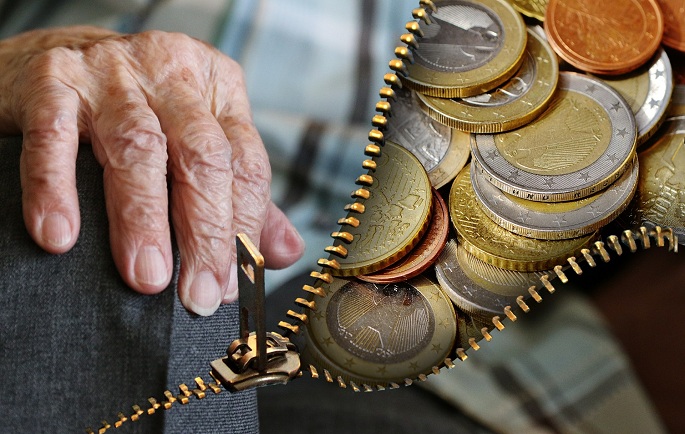67% Finns term economy worse as consumer confidence remains unchanged
Published : 27 Jun 2023, 20:50
The balance figure of the Consumer Confidence Indicator (CCI) stood at minus 8.8 in June, having been minus 8.8 in May and minus 7.9 in April, according to Statistics Finland.
One year ago, in June, the CCI received the value minus 14.3.
The long-term average for the CCI is minus 2.2. The data are based on Statistics Finland’ Consumer Confidence Survey, to which 994 persons resident in Finland responded between 1 and 15 June.
Of the four components of the consumer confidence indicator, only the estimate concerning consumers’ own economy at present improved in June from May.
Expectations concerning both consumers’ own and Finland’s economy in 12 months remained roughly unchanged in June and intentions to spend money on durable goods in the next 12 months weakened slightly compared to May.
Consumers' own financial situation and saving possibilities were still assessed as reasonable in June.
The views on the development of the general unemployment situation in Finland weakened slightly in June compared to May, but consumers felt that the personal threat of unemployment had lessened to some degree.
In June, consumers' expectations concerning both their own and Finland's economy in 12 months improved clearly from one year back but remained on level with May. Expectations were still at a subdued level.
Views concerning consumers’ own economy at present weakened from one year back but improved in June compared to May.
Thirty-one per cent of consumers thought in June, that their own economy was weaker than one year ago. Only 24 per cent of consumers regarded their own economy stronger at the time of the survey than one year ago. Altogether 67 per cent of consumers thought that Finland’s economy is now worse than one year earlier, and only eight per cent considered it to be better.
In June, 24 per cent of consumers believed that Finland’s economic situation would improve in the coming twelve months, while 35 per cent of them thought that the country’s economy would deteriorate. In all, 27 per cent of consumers believed in June that their own economy would improve and 19 per cent of them feared it would worsen over the year.
Consumers’ expectations concerning the development of the general unemployment situation in Finland weakened slightly in June but still remained on the long-term average level. Twenty-two per cent of consumers expected that unemployment would decrease over the year and 35 per cent believed it would increase.
In June, employed consumers (wage and salary earners and self-employed persons) felt that their personal threat of unemployment or lay-off had lessened slightly. The threat was estimated to be slightly lower than the long-term average. Six per cent of employed persons believed that their personal threat of unemployment had lessened and 12 per cent thought the risk had grown. Over one half or 56 per cent of employed persons felt in June that they were not threatened by unemployment or lay-off at all.
In June, consumers' estimates of the inflation at the time of the survey and their expectations concerning the rate of change in prices in one year's time remained unchanged and high.
Consumers estimated in June that consumer prices have risen by 7.7 per cent from June last year and would go up by 4.5 per cent over the next year. Altogether 89 per cent of consumers thought that prices had gone up much or fairly much over the year. Clearly fewer consumers, or 31 per cent, expected prices to rise at least at the same rate in coming months as well.
As in the preceding few months, the time was considered very poor for taking out a loan and also for saving in June. Only 10 per cent of consumers regarded the time favourable for taking out a loan and 38 per cent considered saving worthwhile. At the same time, intentions to take out a loan were also very low. In June, 13 per cent of consumers were planning to take out a loan within one year.
In June, consumers considered their own financial situation to be fairly good. It was expected that the saving possibilities would be as per usual in the coming months. In June, 58 per cent of consumers had been able to lay aside some money and 72 per cent believed they would be able to do so during the next 12 months.
In June, the time was still regarded very unfavourable for buying durable goods. Only eight per cent of consumers thought the time was favourable for making expensive purchases.
Consumers’ intentions to spend money on durable goods in the next 12 months were still very low in June. Their intentions to make purchases subsided especially compared to one year ago. In June, nine per cent of consumers planned on increasing and as many as 47 per cent anticipated they will be reducing their spending on durable goods over the next 12 months.
In June, consumers had fewer plans than usual to buy a car during the next 12 months. Intentions to renovate one's dwelling were also lower than the long-term average.
In June, only 13 per cent of consumers were either definitely or possibly going to buy a car during the next 12 months. Twelve per cent of consumers considered buying a dwelling or building a house. Fifteen per cent of consumers were planning to spend money on renovating their dwelling during the next 12 months.


